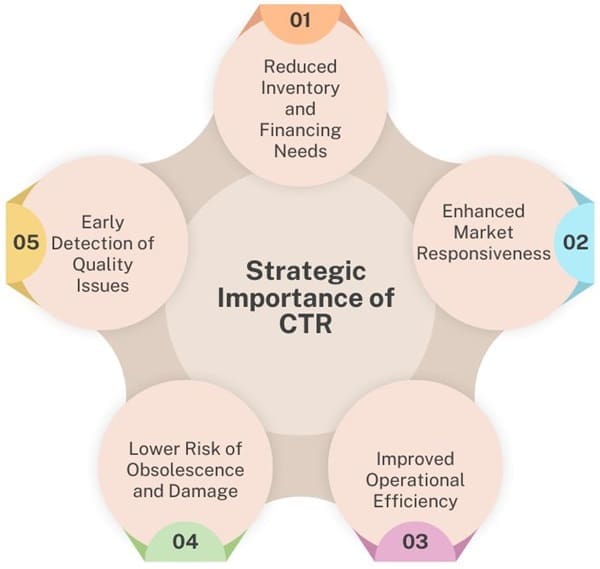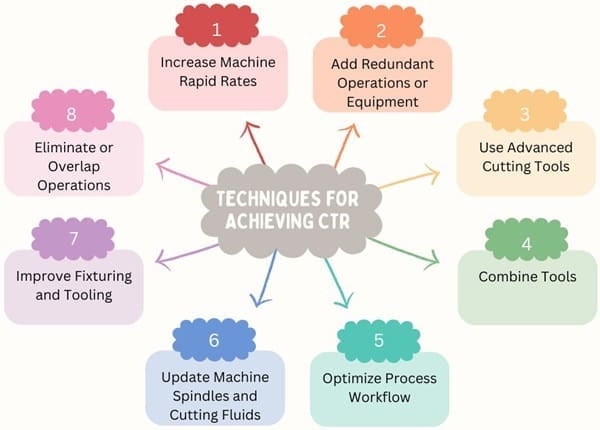Cycle Time Reduction (CTR) is a strategic approach to improving business efficiency and profitability. It goes beyond traditional cost-cutting methods by focusing on reducing the time required to complete tasks. This method not only cuts costs but also enhances a company’s ability to compete in the global market by leveraging time as a strategic advantage.
Table of contents
What is Cycle Time Reduction?
CTR involves minimizing the time required to complete a task by adopting more efficient techniques. This process includes identifying and eliminating non-value-added (NV) activities—those that do not contribute to or enhance the value of the final product. By focusing on these inefficiencies, companies can significantly reduce their overall cycle times.
Public, Onsite, Virtual, and Online Six Sigma Certification Training!
- We are accredited by the IASSC.
- Live Public Training at 52 Sites.
- Live Virtual Training.
- Onsite Training (at your organization).
- Interactive Online (self-paced) training,
Example
- Current Process: Takes 3 minutes (180 seconds)
- Improved Process: Takes 2.4 minutes (144 seconds)
- Cycle Time Reduction: 20%
Strategic Importance of CTR
Unlike traditional cost reduction methods, CTR enables companies to strengthen their core capabilities and use time as a competitive weapon. Key benefits include:

- Reduced Inventory and Financing Needs: Lower cycle times decrease the need for finished goods and WIP inventory, reducing the financial burden of holding inventory.
- Enhanced Market Responsiveness: Faster order fulfilment increases market opportunities and enhances customer satisfaction through quicker and more reliable delivery.
- Improved Operational Efficiency: Reducing order and production schedule changes boosts manufacturing efficiency and reduces operating costs.
- Lower Risk of Obsolescence and Damage: With faster inventory turnover, the risk of inventory obsolescence and damage decreases.
- Early Detection of Quality Issues: Shorter cycle times enable quicker identification and resolution of quality problems.
Real-World Impact of CTR
Automotive Industry Case Study:
Cycle Time Reduction: From 47 days to 7 days
Order Fulfillment Cycle Time (OFCT): Reduced from 18 days to 4 hours
Cost Savings: $400,000 in annual overtime costs eliminated
Working Capital Increase: $22 million
Inventory Reduction: $11.5 million
Also Read: Turnaround Time
Methodology for Cycle Time Improvement
Implementing CTR involves a structured four-step process designed to deliver rapid and sustained results:

Opportunity Assessment: Conduct a thorough analysis to identify, quantify, and prioritize potential improvement areas
Develop strategies for addressing identified opportunities, ensuring optimal deployment of personnel and resources.
Solution Design: Create solutions that target high-level process improvements to avoid sub-optimizing parts of the business. Ensure solutions are comprehensive and address the root causes of inefficiencies.
Implementation Planning: Develop detailed plans for implementing the solutions, including performance measurement systems to track progress and ensure accountability. Establish clear metrics to measure the impact of the improvements.
Implementation Coaching: Provide continuous guidance and support during the implementation phase to ensure successful execution of the designed solutions.
Also Read: Just-in-Time Manufacturing
Techniques for Achieving Cycle Time Reduction
A variety of techniques can be employed to achieve CTR, especially in the context of automotive parts machining:

- Increase Machine Rapid Rates: Optimize machine speeds to reduce processing time.
- Enhance Machine RPM and Feed Rates: Adjust machine settings to operate at higher speeds.
- Add Redundant Operations or Equipment: Introduce additional machinery or processes to handle high-volume tasks efficiently.
- Use Advanced Cutting Tools: Replace traditional carbide tools with materials like cubic boron nitride (CBN), ceramic, silicon nitride, or polycrystalline diamond (PCD).
- Combine Tools: Use multi-function tools to perform multiple operations simultaneously.
- Optimize Process Workflow: Reorganize workflows to streamline operations and reduce bottlenecks.
- Update Machine Spindles and Cutting Fluids: Upgrade to faster spindles and more effective cutting fluids.
- Improve Fixturing and Tooling: Enhance the rigidity and precision of fixtures and tools to minimize vibration and improve accuracy.
- Eliminate or Overlap Operations: Remove unnecessary steps or perform multiple steps concurrently.
Benefits of Reducing Cycle Time
Reducing cycle time impacts all areas of business operations, both directly and indirectly, offering numerous benefits:

Lower Costs
As cycle time decreases, efficiency and productivity increase. Processes such as inspections become faster and more efficient. Improved factory layouts reduce wait times and queues, allowing materials to move through the system more quickly. These changes cumulatively lower the cost per unit produced.
Automation reduces labor utilization, and eliminating waiting times boosts the bottom line.
Increased Capacity
Manufacturing equipment is costly, and maximizing ROI is crucial. A 25% reduction in cycle time increases capacity, allowing for higher productivity.
This improved efficiency enhances overall equipment effectiveness, enabling the production of more jobs with the same resources. This also helps executives make informed capital expenditure decisions based on machine data that reduces cycle time.
Improved Service Levels
Manufacturing improvements often focus internally, but their most significant impact is external. Reduced cycle time leads to shorter lead times and faster delivery, meeting customer demand more efficiently. Faster delivery increases the likelihood of new and repeat orders, enhancing brand reputation as customers perceive the company as responsive and reliable.
Competitive Advantage
Reducing cycle time provides a competitive edge in two ways. First, faster turnaround of finished goods reduces lead times, positioning the company as a preferred source. Second, quicker cycle times facilitate faster innovation and market entry for new products, giving a marketing advantage over competitors.
More Efficient Business Processes
Lower cycle times lead to more efficient business practices. This mindset of continuous improvement extends across all business functions, not just production, fostering a culture of ongoing enhancement.
Also See: 13 Benefits of a Six Sigma Green Belt Certification
How to Reduce Cycle Time?
Several steps, rooted in Lean and Six Sigma methodologies, can help reduce cycle time:

Step 1: Begin with a Process Map
A process map visually plots the workflow of a part or finished good through the process and at individual workstations. This helps identify inefficiencies, bottlenecks, waiting times, and other issues stemming from legacy procedures or manual data management.
Step 2: Calculate Existing Cycle Times
Understanding your current cycle times is essential. Even a rough manual calculation provides a benchmark. This is closely tied to the company’s overall equipment effectiveness (OEE), which, in manual data management environments, is often overestimated.
Step 3: Eliminate Waste
With a clear process map and an understanding of current cycle times, teams can begin eliminating wastes that contribute to long cycle times. Common types of waste include:
- Quality Issues: Defective goods not caught before completion or requiring rework.
- Excessive Manual Paperwork: Error-prone documentation such as “travellers.”
- Non-Value-Added Work: Activities that do not add value to the final product.
- Overproduction and Underproduction: Producing too much or too little.
- WIP Staging and Internal Transportation: Inefficient handling and machine layout.
Step 4: Deploy Standard Work Documentation
After identifying problems and implementing improvements, standard work documentation is essential to maintain consistency. This documentation outlines specific tasks, operator motions, communication standards, and more, ensuring everyone performs tasks uniformly and trains new workers effectively, keeping cycle time low and preventing variance.
Step 5: Audit Machine Capacity
Manufacturers often deal with a wide range of finished goods or parts, varying from simple to complex. Auditing machine capacity in absolute terms and against product complexity is crucial. Flexible scheduling must optimize machine capabilities based on the order mix, ensuring sufficient capacity for both simple and complex orders.
Final Words
Cycle time reduction is a powerful approach for driving cost savings and operational efficiency. By focusing on reducing the time needed to complete tasks, companies can uncover hidden inefficiencies and optimize their processes.
When executed effectively, CTR can lead to substantial improvements in working capital, inventory management, and overall profitability. This strategy not only cuts costs but also enhances a company’s competitive edge by enabling faster, more responsive, and more efficient operations.

About Six Sigma Development Solutions, Inc.
Six Sigma Development Solutions, Inc. offers onsite, public, and virtual Lean Six Sigma certification training. We are an Accredited Training Organization by the IASSC (International Association of Six Sigma Certification). We offer Lean Six Sigma Green Belt, Black Belt, and Yellow Belt, as well as LEAN certifications.
Book a Call and Let us know how we can help meet your training needs.




















